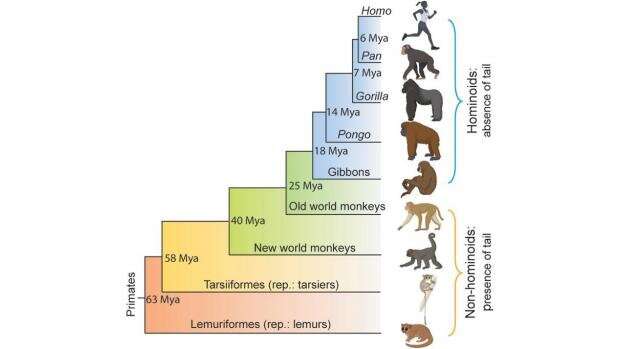The genetic basis of tail-loss evolution in humans and apes

NYU researchers at the Tandon School of Engineering and the Grossman School of Medicine are trying to understand an age-old question that bedeviled most of us at some point: Why do all the other animals have tails, but not me? The loss of the tail is one of the main anatomical evolutionary changes to have occurred along the lineage leading to humans and to the "anthropomorphous apes." The loss of tails has long been thought to have played a key role in bipedalism in humans
This curiosity-based question was addressed by using bioinformatics tools to look at differences between the genomes of humans (and the other apes, which all lack tails) and monkeys (which all have tails, like most other mammals).
Bo Xia, a Ph.D. candidate studying this problem in the labs of Jef Boeke and Itai Yanai, looked at sequence alignments of all genes known to be involved in tail development and discovered a movable piece of DNA called a retrotransposon inserted in the TBXT gene, which is a developmental regulator crucial for tail development. The reason it had not been spotted before was due its placement in noncoding (intron) DNA, where most people would not look for mutations.
Examination of the gene, which carried other copies of the Alu retrotransposon, led to a model for how the Alu might disregulate splicing of TBXT RNA. The researchers engineered a mouse model to test this hypothesis and found that indeed, many mice with a suitably altered genome lacked a tail. They also found that the mice without tails also suffered from spinal cord malformations. It's possible our ancestors who lost their tails also had this side effect, which may contribute to some health problems even today.
No comments:
Post a Comment